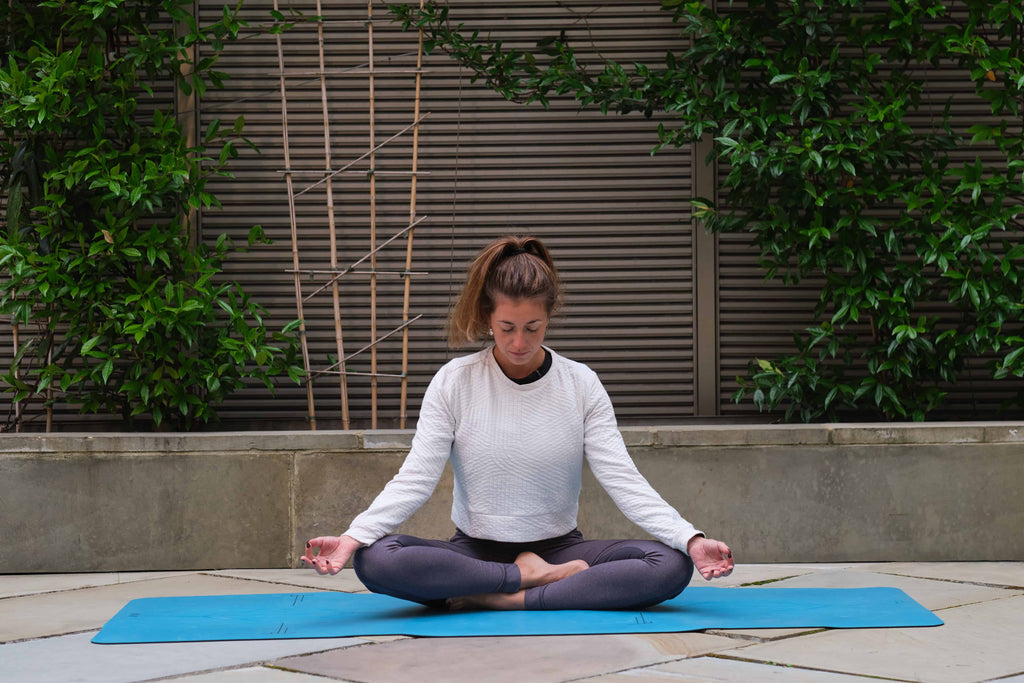If you’re starting a yoga journey in 2020, chances are, you’re doing so from the comfort and safety of your own home. Perhaps you moved the kitchen table aside to make room on the floor, or maybe you cleared out the spare bedroom and turned it into a dedicated sanctuary.
Whatever the case, by making a conscious choice to practice yoga every week, you’re making a conscious choice to take care of yourself during this turbulent time. For that, we’re happy for you.
But before you embark on your journey, there are some things you ought to know, especially if your practice is to be a self-guided one.
Here are a few key considerations to make before you start your yoga practice.
1. Make some space
First and foremost, yoga requires some sort of space. Whether it’s in your living room, bedroom or home office, you’ll need a space that is spacious enough for you to stretch high as you move from urdhva hastasana and into foreword fold, or stretch low as your lie on your back and perform a morning stretch.
If you can, dedicate a portion of your home to your practice and perform routines in the same location. This way, you can compartmentalise your yoga and easily switch into the right headspace as you step onto your mat.
Learn more about this
Check out this article we wrote:
2. Invest in a mat and some props
Next up, you need some yoga gear. Unlike other activities, yoga doesn’t require a lot of pre-requisites, but you will need a reliable (and preferably environmentally friendly) yoga mat.
It might also be wise to invest in a block to help support you when you’re in deeper poses. This will help reduce the risk of overstretching and possible injury. However, a block isn’t a necessity. A folded towel or sweater can do the exact same job.
Learn more about this
Check out these articles we wrote:
- How to care for your personalised yoga mat
- The 5 benefits of yoga mat alignment guides
- Designing a personalised and eco-friendly yoga mat
- What is Truelign?
3. Commit to a time and stick to it
If you’re wanting to maintain a yoga practice that extends beyond a month, we recommend committing to a specific time during the day to practice. We also recommend keeping your practice realistic and letting yourself off the hook if you miss a day.
It can be all too easy to set high expectations when it comes to taking care of ourselves, and a single failure is often enough to put us off practicing altogether. But nothing good was ever easy, and a healthy yoga practice takes more than a day to build.
By committing to a specific time of day, you can begin to instil some self-accountability, and this will be the thing that helps push you over that initial hump to the place where every day becomes a yoga day.
Learn more about this
Check out these articles we wrote:
4. Listen for the three Ps
To make sure you don’t injure yourself, listen for the three Ps: pain, pinching and pushing.
There’s nothing worse than an injury. To avoid your chances, it’s important to listen to your body when you practice yoga. Work within your means and if you’re in a pose and you do feel pain (especially inside your joint structures like your knees, hips, spine, shoulders or neck), move slowly out of the pose.
Of course, there’s a difference between pain and discomfort, and as someone who is trying yoga for the first time, you may find yourself in poses that cause you some level of discomfort. If this is the case, trying to soften the stretch or adjust your body to a more comfortable position. You could even use a prop to help you here.
Note – Pain often feels hot and sharp, whereas discomfort is a dull, nagging sensation.
Learn more about this
Check out this article we wrote:
5. Don’t forget about meditation and pranayama
Yoga isn’t just about feeling a good stretch. Yoga is about learning to listen to your mind and your body. It’s about spiritual enlightenment and finding a sense of inner peace when the world around you is chaos. More than anything, it’s about developing a sense of present mindedness.
Stretching alone won’t get you to this place, though. For your yoga practice to be truly effective, remember to meditate (and never skip out on your pranayama). A holistic meditation practice can help you build resilience to stress and anxiety, and it’s been scientifically proven to help keep you mentally balanced and healthy. And during a time like this, that’s more important than anything.
Learn more about this
Check out these articles we wrote:
- Stressed and working from home? Using yoga to care for your mental health
- How yoga and meditation improve your resilience to stress and anxiety
- The Yogaline founders talk yoga, meditation and rules to happiness
Cut yourself some slack
For what it’s worth, practising yoga at home can be more challenging that practising in the studio. When you’re not paying for it and you know you don’t have to be somewhere, it can be tough to carve out time in your day for yourself, especially when there’s work and family to tend to first.
But nobody says a healthy yoga routine has to be one performed every single day. If you do miss a session or even a week, give yourself the benefit of the doubt and cut yourself dome slack. The key thing is that you just show up to your mat when time works for you, and that you remain open and accepting to your practice, whatever your practice may be.


Leave a Reply